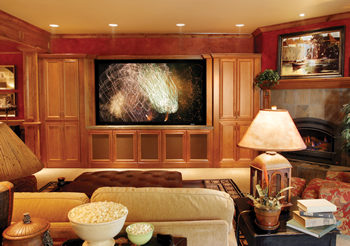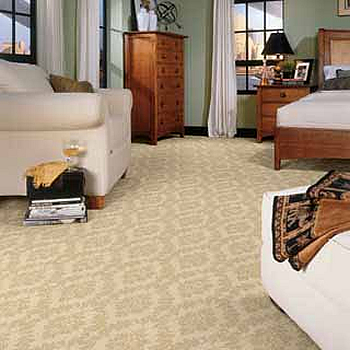How to Select the Right Carpet for Your Home
Having new carpet installed in your home is a significant investment. So, when you're thinking about carpeting, you need to be an informed consumer to make the right choice for your home, your lifestyle, and your budget. For example, there are important differences in the materials and fibers with which carpet is made – each has its own strengths and weaknesses. Knowing that information is important when you choose the best carpet for your home. Here are some guidelines that will help you make the best choice.
There are four main types of fiber typically used in the manufacture of today's broadloom carpeting. Three are synthetic and one is natural. Each varies somewhat in colorfastness, stain resistance, durability, and how easily and thoroughly it can be cleaned. Here's how they compare:
Nylon (a synthetic fiber)
Nylon is known as a durable fiber. It's a good choice for heavy traffic areas. It has great resiliency, accepts a wide range of colors, is relatively colorfast, is easy to clean with excellent results, and is not attracted to oily soils. But, it is also the easiest of synthetic fibers to stain with typical food and beverage spills, and acid dye spills such as Kool-Aid. Will lose color in presence of bleach, especially chlorine. It would be a good choice to install nylon in a heavily-used living room, hallway, stairs, etc.
Olefin (a synthetic fiber)
Olefin tends to mat down and wear faster, but it has some excellent qualities, such as water resistance including water-based spills and acid dye spills, such as Kool-Aid, it is colorfast, and resistant to chemicals such as strong cleaning chemicals. However, it mats and degrades faster than nylon, wicks soils after cleaning, and attracts oily soils. Olefin is a good choice in areas where moisture is prevalent, such as in a basement or around a swimming pool. It's a bad choice for areas where oils and greases will be prevalent, such as in a room close to a garage or right off a city street or paved parking area,
Polyester (a synthetic fiber)
Polyester is soft to touch, is colorfast, semi-resistant to bleaches and chemicals, naturally stain resistant, and not attracted to acid dyes, such as Kool-Aid. But it also has poor resiliency, is attracted to oily soils, and wicks soils after cleaning. Polyester is a good choice for low-traffic areas (bedrooms), and areas that have spot and stain concerns. It's not the best choice for heavy traffic lanes, such as hallways, entryways and living rooms.
Wool (a natural fiber)
Wool wears well, has a long life, accepts wide range of colors, gives warmth to the room, is fire and flame resistant, hides soils and repels moisture. Unfortunately, it is expensive, dissolves in chlorine bleach, can be difficult to clean or remove stains from, and can lose color. It is a solid choice for most rooms in your home, but the price may be prohibitive.
When you look for carpeting for your home, be sure to seek out a company with an excellent reputation and a proven track record. Work with a local company which offers a wide variety of brands and fabrics, so they're not trying to simply sell you what they have in the warehouse. Choose a company which stands behind the installation process –many carpet retailers user third-party installers for whom they are not responsible. While price is important, keep in mind that big-box stores may not be able to provide the personal attention to you and your project compared to smaller independent companies. And most-importantly, it's advisable to work with a local company you can trust.
Carpeting your home is a big investment that will be with you for years. Seek out experienced, trusted professionals and you'll have a much better result. You'll wind up with carpeting you love which makes your home look more beautiful, too!
- Back to our Resources page for more information and additional articles.
- Contact us today for your home remodeling consultation.
- Find out more about remodeling and renovation services provided by McClincy's.
- Contact McClincy's 24/7 for the emergency help you need with damage from water, flooding, fire, smoke, wind, or storms.




